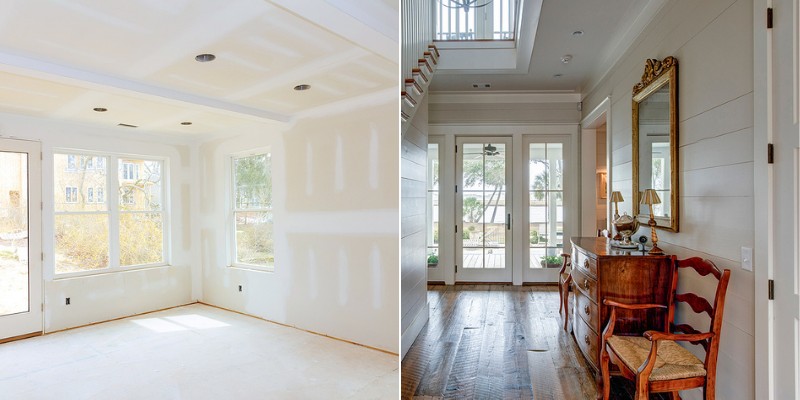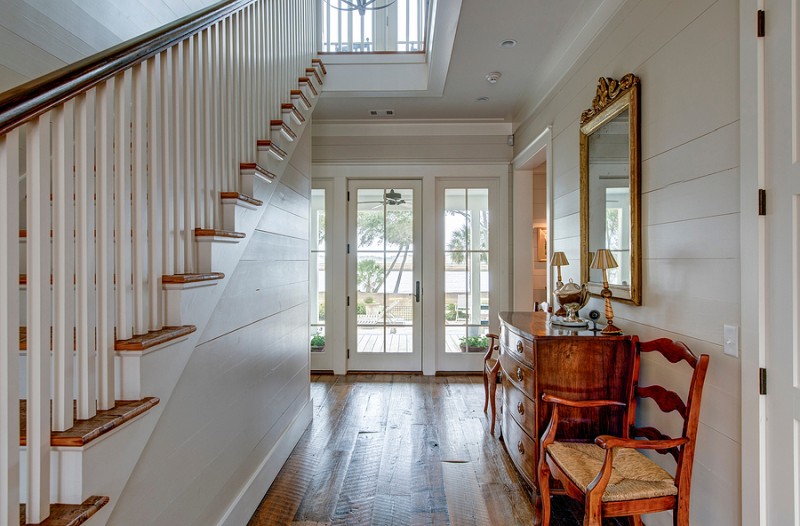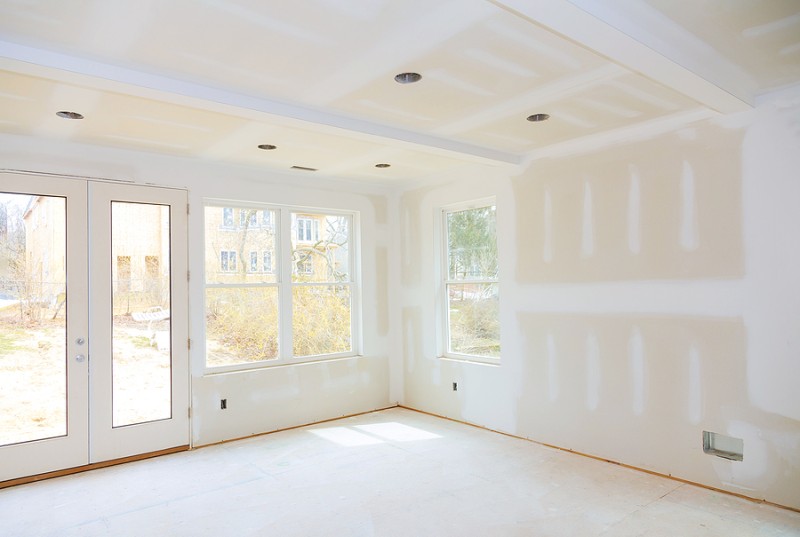Despite the growing popularity of shiplap in recent decades, drywall continues to be one of the most common wall materials used in home interiors. However, is drywall better than shiplap? Let’s find out below.

Both materials are suitable for a wide range of interior design types, but they still have their own set of advantages and disadvantages.
It might be hard for you to choose one or the other, but it’s not impossible. This article will inform you about shiplap and drywall to make it easier for you to decide which would be best for your home project.
Before choosing, there are some factors that you need to consider. Let’s compare drywall and shiplap based on various characteristics:
1. Know What You’re Getting
Knowing just what goes into shiplap and drywall will help you determine what works best for your walls and budget.
Shiplap
Shiplap is a wood paneling style with rabbets (grooves) cut into each board’s top and bottom, allowing the panels to overlap and create a tight seal.
Since shiplap can be costly, some homeowners opt for a fake shiplap look through other types of boards. Shiplap may have been inspired by clinker planks found on ships, but the two are not the same.

Drywall
Drywall is made up of plates of calcium sulfate dihydrate (gypsum). Although it comes in a variety of sizes and thicknesses, it’s most often sold in 4-by-8-foot pieces that are 1/2-inch thick.
Moisture-resistant green drywall (green board) is also available in addition to the traditional white drywall.
2. Appearance and Style
Every house’s interior architecture is influenced by the appearance of its walls. The character of your home will be determined by how you decorate your walls.
Many people paint their walls in neutral colors, but incorporating artistic design will create a different and exclusive look.
Shiplap
Shiplap is a rustic, comfortable look created by a set of grooved wooden boards connected horizontally. While it has plenty of classic looks and uses, it is getting a makeover as contemporary designers are learning to capitalize on its clean lines to enhance a variety of interiors.
Drywall
Drywall was developed as a less costly alternative to plaster. A texturing technique called skim coating provides drywall with the visual interest of traditional plaster, a look that is prized for its versatility and discipline.
If you want to give your space an elegant character of an Old World urban interior, drywall is an excellent idea.
3. Cost and Installation
Drywall panels are less expensive per square foot than shiplap, but once maintenance costs are factored in, shiplap is typically the more cost-effective alternative.
Shiplap
Solid wood shiplap costs between $2.50 and $7.00 per square foot, but you may be able to find it for less at a nearby sawmill. Shiplap boards made of plywood and medium-density fiberboard (MDF) are less expensive but less sturdy.
Drywall
Drywall costs around $15 per 4-by-8-foot frame, or $2.15 per square foot, so you’ll still need joint tape, joint compound (drywall mud), and a sander to bring it up.
You’ll be left with a coat of fine sanding dust to clean up after the construction is complete. Many homeowners employ a contractor to do the construction because it is messy and time-consuming.
Expect to pay between $1.50 and $1.80 per square foot for the labor work.

4. Maintenance and Durability
In today’s world, everyone desires to keep things easy and clean at home, so it is essential to choose an option that is low maintenance and long-lasting.
Shiplap
Shiplap is simple to clean with a moist sponge, but the cracks, which tend to accumulate dust, need special care.
Genuine shiplap is made of 3/4-inch thick solid wood and can withstand years of use. It can suit your needs wonderfully if you want a wall that is sturdy, low maintenance, and simple to build by yourself or if you’re going to create a comfortable rustic environment.
Drywall
Drywall, on the other hand, is more fragile. It’s common to get scratches and dents on drywall, making it look shabby rather than charmingly aged.
Carelessly moving furniture or a scratch by a pet may result in a hole that is impossible to fix. Since drywall absorbs water quickly and degrades when wet, any water is likely to spoil it.
Because of its weakness to water, drywall is difficult to clean. Drywall is usually seen in homes where formal ambiance and flexibility in the design are a priority.
Advantages of Shiplap over Drywall
Shiplap clearly takes the throne in a head-to-head battle. It is easy to install, and shiplap requires minimal expertise and tools to be installed—just a bunch of nails, benches, and the regular carpenter gear found in your home.
When we install drywall, we generally perform exercises like tapping, mudding, and sanding. This results in the formation and spread of various dust particles in the surrounding area, which becomes a tedious job to clean.
However, with shiplap, you are good to go once it is nailed. Shiplap is also much more durable than drywall and can also be cleaned easily using a cloth.
If you are planning on hanging pictures on your walls, then shiplap is the clear winner. Non-firm dry walls can’t hold up when you are jutting in a nail and end up getting dented. On the contrary, shiplap is strong enough to hold onto its rigidity and provide you more significant support to hang objects.
Advantages of Drywall over Shiplap
You may incur additional costs with having shiplap, such as sealing the walls every 3-4 years and getting it painted, maintenance charges, etcetera.
Furthermore, drywall takes less time to be prepared and costs less if you do some DIY.
Final Verdict
Unless you are in a rush to move in, shiplap outperforms drywall in almost every department. Even though it costs a bit more, it is more efficient and less prone to water damage, and holds up in the long term.
We hope that from this article, you now know what choice would be better for you when renovating or remodeling your home.
Related Posts
- Comparison of Shiplap vs “Tongue and Groove” vs Beadboard Wall Paneling
- Comparison of Manufactured vs Modular Homes with Pros/Cons
- 10 Different Types of Glass for Home Windows (With Pros and Cons)
- Here Are The Main Pros and Cons of a Barndominium House
- Main Advantages and Disadvantages of Vaulted Ceilings for Homes
- Top 9 Drywall Alternatives for Your Home Ceiling (With Photos)
Leave a Reply